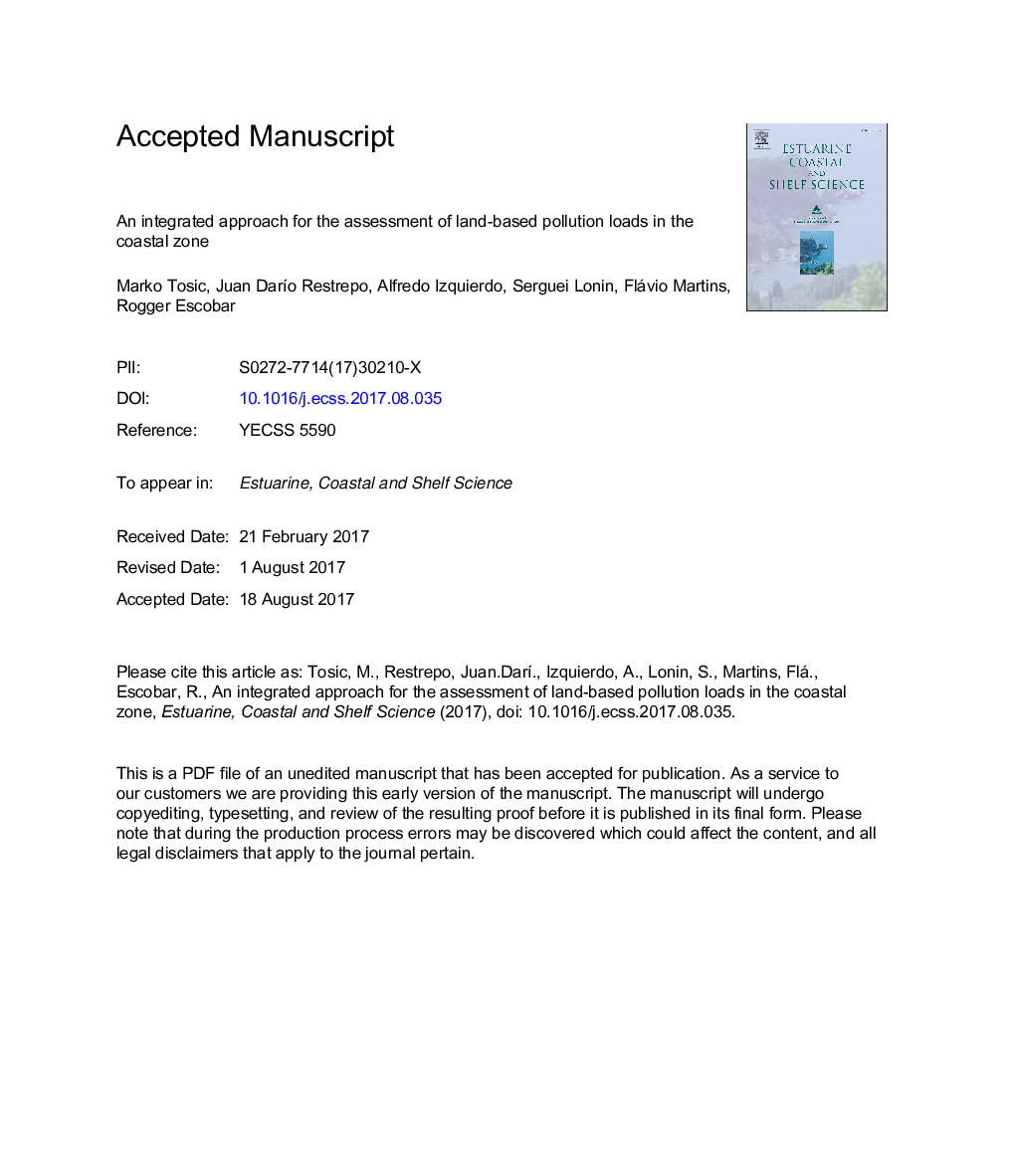| کد مقاله | کد نشریه | سال انتشار | مقاله انگلیسی | نسخه تمام متن |
|---|---|---|---|---|
| 10223848 | 1701059 | 2018 | 33 صفحه PDF | دانلود رایگان |
عنوان انگلیسی مقاله ISI
An integrated approach for the assessment of land-based pollution loads in the coastal zone
ترجمه فارسی عنوان
یک رویکرد یکپارچه برای ارزیابی بارهای آلودگی زمین در منطقه ساحلی
دانلود مقاله + سفارش ترجمه
دانلود مقاله ISI انگلیسی
رایگان برای ایرانیان
کلمات کلیدی
خلیج کارتاژا، کیفیت آب، بارهای آلودگی مدیریت منطقه ساحلی، آلودگی زمینی،
موضوعات مرتبط
مهندسی و علوم پایه
علوم زمین و سیارات
زمین شناسی
چکیده انگلیسی
The identification and prioritization of pollution sources is essential to coastal zone management. This task is complicated when a variety of pollution sources are found and by limited data availability, which can result in an inconclusive assessment and differing public perceptions, ultimately hindering the progress of management actions. This is the case in Cartagena Bay (Colombia), a Caribbean hot-spot of pollution, which receives large freshwater discharges from the Magdalena River drained via the Dique Canal along with coastal industrial effluents and untreated domestic wastewater from parts of the coastal population. This study presents a methodology for the integrated assessment of anthropogenic pollution sources discharged into the coastal zone by estimating their loads and comparing their relative contributions to receiving coastal waters. Given the lack of available data on discharges and water quality, an integrated approach is applied by combining various methods of load estimation while emphasizing the importance of calculating confidence intervals for each load value. Pollution loads from nearby sources of domestic wastewater, coastal industrial effluents and continental runoff were assessed with respect to their contributions of coliforms, total suspended solids, nitrogen, phosphorus, and biological oxygen demand (BOD). Loads from the canal's surface runoff were calculated with monthly discharge and water quality data. Domestic loads were computed using GIS analyses of population and sewerage coverage in combination with export coefficients of daily load per capita. Industrial loads were estimated based on previous studies. Results show that each type of land-based source is responsible for different pollution impacts observed in Cartagena Bay. Occasionally, inadequate recreational water quality can be attributed to nearby sources of domestic wastewater, which contribute the highest coliform load (6.7 ± 3.9 Ã 1015 MPN/day). Continental runoff via the Dique Canal contributes the greatest sediment load (2.5 ± 1.9 Ã 103 t/day) causing the bay's turbid plumes and related ecosystem issues. Hypoxic conditions in the bay can be attributed to all three pollution sources which all discharge significant BOD loads (2-8 t/day), while the highest total phosphorus load comes from the Dique Canal (3.2 ± 2.4 t/day) and the highest nitrogen loads flow from the canal (3.7 ± 3.1 t·NO3-N/day) and the industrial sector (3.1 ± 4.1 t·N/day). Given that these loads are projected to increase in future years, this study highlights the importance of prioritization and mitigation in coastal pollution management and demonstrates a method that could be applied in other places with similar problems in the Wider Caribbean Region.
ناشر
Database: Elsevier - ScienceDirect (ساینس دایرکت)
Journal: Estuarine, Coastal and Shelf Science - Volume 211, 31 October 2018, Pages 217-226
Journal: Estuarine, Coastal and Shelf Science - Volume 211, 31 October 2018, Pages 217-226
نویسندگان
Marko Tosic, Juan DarÃo Restrepo, Alfredo Izquierdo, Serguei Lonin, Flávio Martins, Rogger Escobar,
